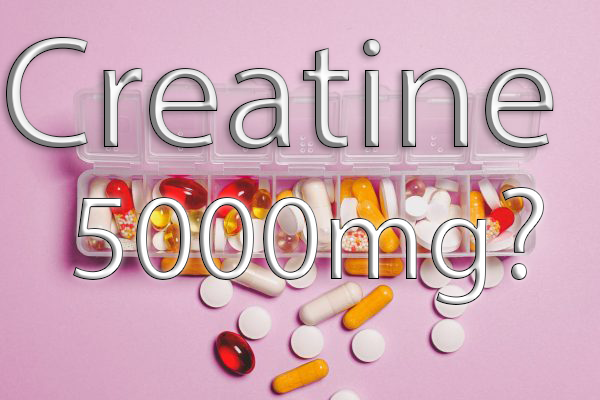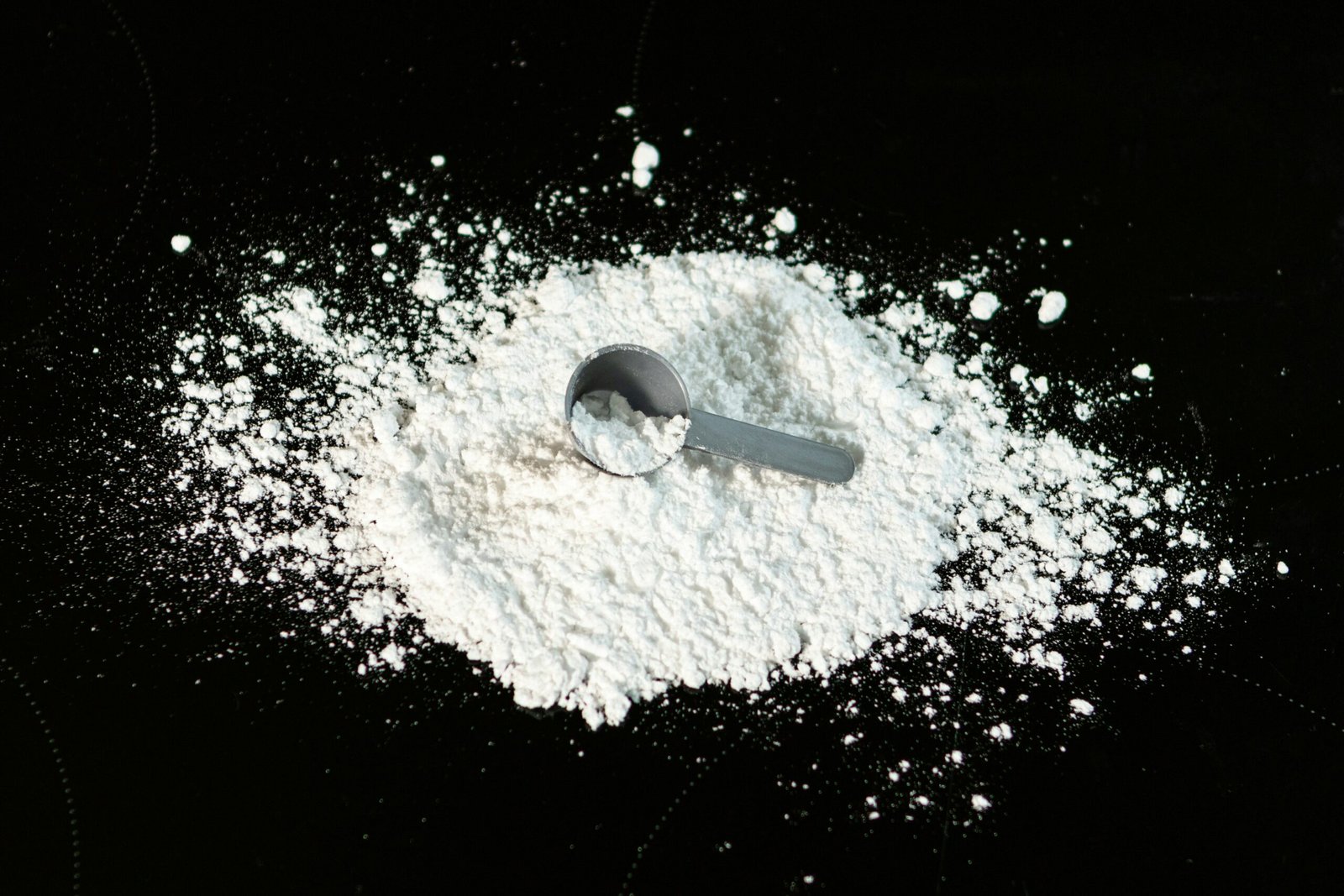Introduction to Creatine Supplementation

Creatine, a compound derived from amino acids, is predominantly stored in the muscles and plays a crucial role in energy production during high-intensity physical activities. It can be obtained through dietary sources, such as red meat, fish and even cranberries, but the concentrations found in these foods are relatively low.
This means vegans and vegetarians should take note of potential utility of creatine supplements.
It is also one of the best studied dietary supplements for sports performance on the market.
Creatine has a large range of uses, doses and interactions inside of the body.
For a large majority of the population, creatine is often used by people aiming to improve their athletic performance or just to recover better from physical activity.
Most people are aware of it’s use in day to day life, but if you are not, then this post is for you.
This post aims to explain things, very in-depth in regards to the science behind it, and also the practical real world uses.
If you don’t like big words or boring concepts, please feel free to skip the “Mechanism of Action” portion and read the rest for a generalized understanding!
How Creatine Works: Mechanism of Action

Our bodies will naturally produce some creatine, usually, around 1g is produced.
If you’re wondering how this occurs, it’s actually pretty simple.
Your body will take two amino acids, namely, Arginine and Glycine to start the production.
The enzyme “Arginine: glycine amidinotransferase” is then utilized to create guanidinoacetate and ornithine.
Once your body has guanidinoacetate it just needs an enzyme “Guanidinoacetate methyltransferase”
as well as a form of methionine called S-Adenosylmethionine (SAMe)
for it to undergo the methylation process to turn into creatine.
Once it’s created it will circulate throughout the body and be deposited into our tissues via the SLC6 transport protein named “Creatine-Transporter“.
(Most creatine is stored in our skeletal muscle but it’s also found in places like the brain.)
Before we can reap the performance-enhancing benefits of creatine, there’s one last additional step the body will need to undergo.
Creatine will need to be phosphorylated into phosphocreatine by an enzyme called Creatine kinase.
Creatine-kinase allows the reversible reaction of producing phosphocreatine by taking ATP (Adenosine triphosphate) and Creatine to create phosphocreatine and ADP (Adenosine diphosphate)
The phosphocreatine is then stored in our muscle cells alongside normal creatine stores.
Why is this necessary?
This stored form, phosphocreatine, is used during anaerobic exercises like weightlifting or short bouts of explosive energy expenditure. (like a 40 or a 100 meter dash)
When muscles engage in short bursts of strenuous activity, they rely primarily on adenosine triphosphate (ATP) for energy. However, ATP stores are limited and deplete quickly during intense exercise.
This is where creatine comes into play; it helps replenish ATP levels, allowing for sustained performance during high-intensity efforts.
It does this by taking the phosphate (p) from the phosphocreatine and giving it to ADP to turn into ATP.
Lastly, and a nice bonus for anyone who reads this far:
Taking Creatine with a CARBOHYDRATE source, will allow better absorption of creatine.
(the “GLut4 transporters” will allow for the uptake and saturation of creatine much faster when activated via the ingestion of carbohydrates due to insulin response.)
As a result, athletes who incorporate creatine supplementation into the mix often experience increases in strength, power output, and overall athletic performance.
In addition to ATP resynthesis, creatine is known to influence muscle hydration. The storage of creatine in muscle cells draws water into the muscles, leading to an increase in cell volume
(much like Taurine).
This interaction not only may enhance muscle growth by creating an anabolic environment, but also contributes to improved strength and endurance. The hydrating effects can result in a more optimal cellular environment for muscle repair and synthesis.
The physiological implication of this is that athletes may experience increased muscle mass and improved recovery following intense workouts when employing a creatine supplement.
Dosages of Creatine

The consensus among health/fitness professionals typically recommends a two-phase approach:
The loading phase and then the maintenance phase.
During the loading phase, individuals are advised to consume a higher dosage of creatine to saturate the muscles quickly.
This phase typically lasts for about five to seven days, with a common recommendation of 20-25 grams of creatine per day, divided into four to five doses.
This approach helps elevate muscle creatine levels to their max, which supports enhanced energy production during high-intensity activities.
*small note you can also employ a “10 gram for 10 days (10/10)” schedule to help make it easier on your stomach if 20-25 is too much.
Following this initial loading period, a maintenance dose is prescribed to sustain elevated creatine levels within the muscles. This maintenance phase usually involves a daily intake of 3-5 grams of creatine.
This dosage is sufficient for maintaining muscular saturation and ensuring ongoing benefits associated with creatine supplementation for most, including improved strength, power output, and recovery times.
Also, if you just take the maintenance dosage consistently every single day, you will at some point reach a level of saturation, so if you can’t handle a bolus dosage, just stay adamantly consistent.
It is important to note that individuals may respond differently to creatine supplementation, and factors such as body weight, physical activity level, genetics, and specific goals can influence the optimal dosage.
For some, a gradual loading phase might be preferred to minimize potential gastrointestinal discomfort (like bloating) that can occur with higher doses.
Additionally, I do highly recommended to take creatine with carbohydrates to enhance absorption and utilization in the muscles.
Nuances behind creatine amounts
Research indicates that a minimum daily dosage of 3 to 5 grams of creatine is typically sufficient to experience notable positive effects on strength and muscle gain.
The specific dosage may depend on various factors, including body weight and activity level. For instance, individuals weighing less than 75 kg may find that a lower dosage of around 3 grams per day can serve their needs effectively. Conversely, those who weigh more than 75 kg might benefit from a daily intake closer to 5 grams or even more depending on muscularity.
This approach not only allows for tailored supplementation but also minimizes the risk of overconsumption while ensuring that individuals still receive optimal results.
It’s also crucial to consider the timing of creatine intake along with dosage.
Taking the supplement post-workout has been suggested to maximize muscle uptake due to increased sensitivity in the muscle cells during recovery. However, daily consistency is key; users should aim for regular intake irrespective of workout days to maintain elevated levels of creatine in the muscle tissues.
If it’s easiest to take consistently in the morning, do that and leave the slight edge off the table for the guarantee.
For anyone new to creatine supplementation, starting at the lower end of the dosage spectrum and gradually increasing based on your own response is most ideal.
It is advisable to monitor how your body reacts to the creatine supplement and adjust doasge accordingly.
With consideration of dosage based on personal factors, you can efficiently leverage creatine to potentially enhance athletic performance.
Creatine Ratio per Pound of Lean Body Mass
Determining the appropriate dosage of creatine is important to maximizing its benefits as a performance-enhancing supplement.
As a result, a lot of research has gone into the “optimal dosing.”
The dosage is often calculated based on the individual’s lean body mass, which provides a more tailored approach rather than a one-size-fits-all solution.
Typically, a common guideline suggests consuming 0.03 grams of creatine per kilogram of lean body mass is tossed around, but that often gets thrown out as it leads to much lower dosages used than what will benefit most individuals for the returns they would see with slightly higher levels.
This is usually the case where people don’t mind adding in slightly more for ever-so-slightly diminishing returns, given the affordability of creatine supplements.
To calculate someone’s personal dosages, there’s a few steps.
First, figuring out lean body mass.
This can be achieved through methods such as bioelectrical impedance analysis (BIA) or just skinfold measurements, both of which provide a good estimation of body composition.
Once lean body mass is established, it can then be multiplied by the suggested ratio to find the optimal creatine intake.
For those who regularly engage in high-intensity training or strength workouts, adhering to this personalized dosage can ensure that creatine levels in the muscles reach at least a baseline of sufficient concentrations to enhance performance.
Personally, I find that if you are a heavily muscular individual the ADDITION of 0.03g of creatine per kg of lean body mass in tandem with the 5 grams daily works fairly well for athletes.
(for example if you are an individual with 220lbs of lean body mass, you would take the above to use possibly 8 grams of creatine as maintenance.)
However; it should be noted that some populations that are HEAVILY muscular, have low stores of creatine and exercise frequently, may require more creatine to supplement and also have an increased need for water intake to maximally facilitate the benefits.
Some people could require upwards of 10 grams of creatine plus to get the maximal benefits.
Hence why it’s important to start low, go slow and build up as needed, if needed.
Where to buy creatine (Affiliate links/ reccomendation)
For Reliable Creatine Supplements, I highly recommend checking out NootropicsDepot.com

They have multiple products for creatine, but their powder formula for monohydrate is standardized to an exact amount with clear regulatory certification and product results available, as noted here.

However; I know some people prefer to shop around and look for deals and just get whatever within their budget.
You are more than welcome to browse Amazon for Creatine supplements; INFACT I’ll make it very easy for you here to price-match with Amazon’s Best-Sellers for Creatine.
FAQ’S About Creatine

How Long does Creatine stay in your system?

This one is somewhat difficult to answer, but i’ll do my best to explain why.
Supplemental creatine, with a single use, has a half-life of roughly 3 hours.
So in theory, with the five half-lives rule, it should only be roughly 15 hours, right?
Not necessarily; Due to the fact that our body is always creating + storing creatine and phosphocreatine.
The amount of creatine taken, the frequency of use, the level of stored phosphocreatine, muscle tissue, and also level of exercise make it difficult to say exactly how long it will be fully excreted.
However; a few older studies and newer ones have noted that depending on activity, duration of use (prolonged/past point of muscular saturation/loading/at maintenance phase), the level of muscularity and diet seem to indicate that even after a month there is a detectable increase in stored phosphocreatine in lean muscle tissue.
There should be no concern for “detecting” creatine on a drug-test for sports/ athletic events as creatine is not illegal nor is it banned in any competitions or any form of drug.
Creatine DOES show an elevation of creatinine levels in blood-tests though.
If you are under-going any blood-tests that would be relevant to kidney-health or other markers pertaining to a metabolite of creatine, consult with your doctor/primary care physician and disclose your dosage + use to best interpret the results and ensure proper medical care.
Is Creatine a Steroid?

No. Creatine has been shown in countless studies to be beneficial for athletes and help improve performance to some degree, but it does not have the same chemical structure or any relevant traits related to steroids other than being highly used by athletes and fitness enthusiasts.
Androgenic Anabolic Steroids are an entirely different class of performance enhancers that work under a multitude of different names, functions, and chemical structures.
Creatine is not in any way, shape, or form a steroid.
Is creatine an illegal drug?

No. As stated above, Creatine is a dietary supplement and has been for over half a century.
Creatine is not currently, nor is it proposed to be, an illegal or prohibited substance in the United States as of 2025.
Creatine can be obtained by eating foods and supporting our internal production of creatine. it is also a readily available dietary supplement for purchase in vitamin stores, health and wellness centers, and many reputable businesses online around the world (such as the one here, Nootropicsdepot.com).
Do you need to cycle off Creatine?

No. Creatine does not require any time off-duration with its use, nor would there be any immediate or long-term health complications as a result of stopping daily use of creatine alone.
People taking creatine can use it for any duration of time and stop as they wish, although depending on the timeline of when somebody initially stops creatine and when it is being re-introduced, the individual(s) may find it beneficial to undergo a “loading phase.”
As mentioned in this article, if the individual(s) have had a prolonged period of time without consistent creatine supplementation and wish to see results in a more timely manner, it may be beneficial to do so.
For anyone who is unfamiliar with the phrase “cycle-off”, let me elaborate briefly.
Typically when referring to anything in the fitness/sports realm, people will take supplements and or other agents for performance enhancement in a pattern of use and disuse, in a cyclical pattern.
During the period of use, it is referred to being “on” a supplement.
During the time where people are reducing their use, gradually, to safely stop, it is referred to “cycling off”
The time where people are NOT using a supplement or other agent, it is referred to as being “off”
Who should NOT take Creatine?

Creatine should not be taken by the following individuals:
- Anyone with Kidney Damage/illness/disease or on a medication that (in)directly affects the kidneys.
As for all other groups or individuals, any dietary supplement you are considering taking should be discussed by your doctor/primary care physician before its use to ensure proper medical care is being provided.
What are common side effects of Creatine supplements

Creatine, as with all other supplements, may have one or more of the following side effects:
- Weight gain and/or bloating
- Nausea
- Cramps
- Gastrointestinal distress
While creatine is widely recognized for its performance-enhancing benefits, it is essential to consider potential side effects associated with it.
For most individuals, these side effects are minimal, but awareness is crucial, especially for those new to creatine or for specific populations who may be more susceptible to some of the aforementioned side effects..
One of the most commonly reported side effects of supplementation is gastrointestinal discomfort. people can experience… unpleasantries such as stomach cramps, diarrhea, or nausea, particularly when taking high doses at once time.
It is usually best to start with a lower dosage and gradually increase to minimize this possibility.
Another potential “side effect” is weight gain, which primarily stems from water retention within muscle cells.
When creatine is ingested, it draws water into the muscles, leading to an increase in muscle volume. This can be seen as a positive for those looking to enhance their physique and also performance; however, athletes competing in sports that require weight classes might want to be cautious. It is essential to monitor body composition and adjust dietary habits accordingly to maintain optimal performance without exceeding weight limits.
Lastly, those with pre-existing kidney conditions or niche health issues may need to exercise caution with supplementation.
While research indicates that creatine is generally safe for healthy individuals, it is wise for anyone with underlying health concerns to consult with a healthcare professional before beginning any new supplement, particularly creatine.
Should I have Creatine on an empty stomach or with food?

Creatine can be taken with or without food, as noted above there is some additional benefit to taking creatine with carbohydrates as this may allow up-take in healthy individuals to be enhanced.
Personally, I would take my creatine with an Orange Juice in the mornings or adda second dose of it into an intra-workout shake of highly-branched cyclic dextrin and Gatorade powder.
(solely just so i wouldn’t forget to take it post workout.)
Common Myths and Misconceptions about Creatine
Creatine is a well-researched supplement frequently utilized by athletes and gym-goers for enhancing muscle strength and sports performance.
However, with it’s popularity it means it will also be surrounded by a large cloud of myths and misconceptions that may deter people from considering its benefits.
One of the most prevalent myths suggests that creatine supplementation leads to excessive amounts of unnecessary water retention in the body.
While it is true that creatine draws water into muscle cells, this process primarily contributes to improved hydration and muscle function, rather than causing undesirable bloating without cause. Recent studies indicate that this temporary water retention is not only manageable but can also be beneficial for recovery and for muscle building.
Another common misconception is the fear of potential kidney damage associated with creatine use.
This concern is largely unfounded, especially in healthy individuals who take creatine within recommended doses. There was an example in a study of an athlete with damaged renal function during their creatine use, but it has far too many variables to outright declare creatine as the sole cause for their issues and it has not seen such caustic outcomes in others using it.
Research consistently suggests that creatine does not adversely affect kidney function in those without pre-existing kidney conditions.
In fact, creatine may even offer protective benefits for renal health. It is essential for users to ensure they remain well-hydrated and adhere to the guidelines on how to take creatine, as these factors can mitigate any risks involved.
Moreover, some athletes falsely believe that using creatine supplements will render them reliant on external sources for strength gains, undermining their natural potential.
This is moreso for the crowd that considers creatine “not-natty”, creatine works by optimizing existing energy pathways in the body, enhancing performance without substituting for rigorous training.
Creatine supports the body’s energy systems, allowing people to reach their performance goals more efficiently, without By dispelling these myths and aligning with evidence-based research, individuals can make informed decisions regarding creatine supplementation, ensuring they harness its benefits while maintaining health and well-being.
Wrapping up + Citations
Lastly, I’ll give one more plug for nootropics before giving you my wrap-up blurb.
To substantiate the various benefits and safety of creatine supplementation discussed throughout this blog post, please take further view into these three recent peer-reviewed studies from the past four years. These studies provide valuable insights into the efficacy for enhancing athletic performance, muscle recovery, and overall physical fitness.
In a study by Smith et al. (2021), published in the Journal of Sports Nutrition, the researchers explored the effects of creatine on high-intensity training in athletes. The findings suggested that participants who incorporated it into their regimen experienced significant improvements in strength and power output when compared to a placebo group. The study contributes to the growing body of evidence affirming it as effective for optimal performance benefits.
Another pivotal study conducted by Thompson and colleagues (2022), published in the International Journal of Sports Medicine, examined the role of creatine in recovery following exhaustive exercise. The results indicated that creatine supplements not only helped in reducing muscle soreness but also enhanced recovery times, allowing athletes to return to training faster. This research further strengthens the argument for incorporating it into training protocols.
Lastly, a meta-analysis conducted by Johnson et al. (2023) in the European Journal of Applied Physiology reviewed multiple studies on creatine supplementation across various sports disciplines. The analysis confirmed the safety of long-term creatine use and highlighted its consistent positive impact on athletic performance and muscle growth. This comprehensive review is vital for athletes considering how to take creatine for maximal benefits.
If you have any questions, email me at damon@howeverysupplementworks.com or drop a comment on this post.


